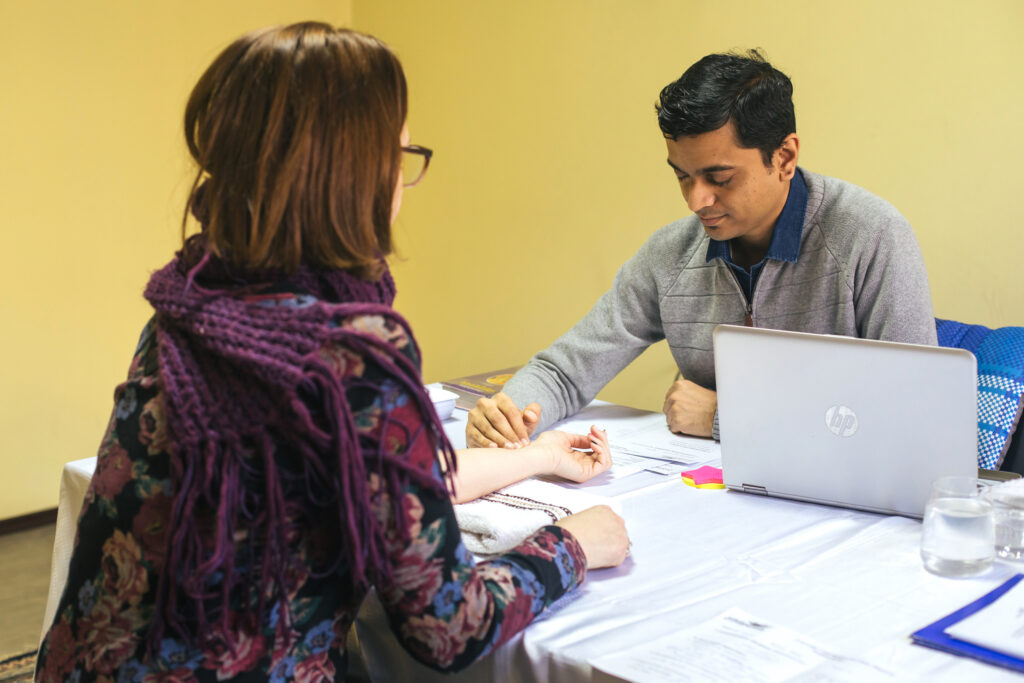“The doctor of the future will give no medicine, but will interest his patients in the care of the human frame, in diet and in the cause and prevention of disease.” — Thomas Edison
Ayurveda has been doing exactly that for thousands of years.
1. Why doctor’s day matters
In India, Doctor’s Day is celebrated on 1 July to honour the birth and death anniversary of the legendary physician Dr B. C. Roy. For me it is a moment to pause, look back at my own path as a professionally trained Ayurveda physician, and share what the title Ayurveda Doctor meant in India, and what it means now as a qualified practitioner sharing this wisdom in Europe.
2. My academic journey – from curiosity to clinical competence
2.1 Bachelor of Ayurvedic Medicine & Surgery (B.A.M.S.)
Duration: 5½ years full‑time (4½ years of coursework + 1 year compulsory rotating internship).
Institute: Sri Sri College of Ayurvedic Science and Research, Bengaluru, affiliated to Rajiv Gandhi university of health sciences and recognised by the National Commission for Indian System of Medicine (NCISM) under the Ministry of AYUSH.
Curriculum highlights:
- Sanskrit & classical texts (Charaka Saṃhitā, Suśruta Saṃhitā, Aṣṭāṅga Hṛdaya, and many more)
- Ayurvedic and modern human anatomy, physiology, biochemistry, pathology, toxicology, and much more
- Dravya Guṇa (pharmacology of herbs & minerals)
- Kayachikitsa (internal medicine), Shalya Tantra (Ayurvedic surgery), Shalakya Tantra (ENT & ophthalmology), and more
- Panchakarma therapies, preventive & social medicine, obstetrics & gynaecology and more
- Internship Rotations: Panchakarma, general medicine, surgery, casualty/emergency, community rural health centre.
2.2 Doctor of Medicine (M.D. Ayurveda) — Dravyaguna
Institute: SDM College of Ayurveda, Udupi
Focus: Advanced identification and pharmacology of herbs, classical research methodology, thesis defence, clinical postings, publishing articles in peer reviewed journals, seminars & teaching undergraduate batches.
3. Lessons the classroom couldn’t teach
While the curriculum built a solid knowledge skeleton, the flesh and heartbeat came from real‑world experiences:
- Pulse diagnosis in OPD – feeling the subtlety of vāta, pitta, kapha in different bodies.
- Village health camps – translating Sanskrit into the local dialect so that grandmothers could take their decoctions correctly.
- Interdisciplinary rounds with modern doctors – assisting in minor surgeries, examining GERD, then tailoring diet, breathwork, and herbs that finally soothed the oesophagus. (Yes, that was also my personal healing story with GERD!)
4. Ayurveda in India – why formal training matters
- Standardised entrance exam (NEET) (earlier CET) just like MBBS aspirants.
- Uniform syllabus & examinations across India vetted by NCISM.
- State medical registration & licence number – legal accountability for patient safety.
- Ethics committee scrutiny of clinical trials & personalised medicine.
- Right to prescribe classical formulations & perform approved Panchakarma procedures (in India).
While in Europe I do not practise as a medical doctor, my training and years of clinical experience in India shape everything I offer, i.e., personalised guidance, safety awareness, and deep respect for this complete system of medicine.
5. Different learning paths in Ayurveda – a gentle clarification
In recent years, Ayurveda has become increasingly popular across the world. Many wonderful practitioners have studied this ancient science through workshops, short-term training, or online programs. These pathways often inspire personal transformation and promote a love for holistic living, which is beautiful and much needed.
At the same time, my own training followed a different path: one of long-term, formal medical education in India. My journey included 8+ years of full-time university study, hospital-based internships, and rigorous clinical exams. This level of depth prepared me not only to understand the philosophy of Ayurveda, but also to safely handle the clinical complexity of disease.
The difference is not about who knows more, it’s about the kind of responsibility we are trained to carry. A university-trained Ayurveda doctor in India is held to medical standards that include diagnostics, pharmacology, ethics, and accountability for patient outcomes. It’s a role that demands ongoing education and clinical reasoning, much like other medical professions.
I say this with utmost respect for all who share and teach Ayurveda in their own way. My intention is not to compare, but to clarify where I’m coming from, so you, as a client or reader, can make informed and safe choices.
6. What this means for you in Europe
- Root cause mindset: I apply traditional Ayurvedic logic to understand your unique imbalances and help you restore harmony, not just manage symptoms.
- Bridging cultures: I can speak both the language of classical Ayurvedic wisdom and the realities of modern life in Europe.
- Safe and respectful support: I always work within local laws and ethical boundaries – offering education, consultations, relaxing Sri Sri Marma treatment and self-care guidance only.
- Holistic approach: With my background and insights from my psychologist spouse, I support not just the body but also the emotional and mental dimensions of healing.
7. Gratitude and invitation
On this Doctor’s Day, I honour my teachers, my patients, and the timeless wisdom of Ayurveda that has guided me through years of study and service. Though my role in Europe may not carry the same legal title, I continue to bring the same care, training, and integrity to every client I work with.
If you are curious about how Ayurveda can support your physical, mental, or emotional wellbeing, I invite you to explore my articles or book a consultation.
May your path to health be informed by knowledge, guided by experience, and warmed by compassion.
Vd. Zope Rakesh, BAMS, MD (Ayurveda)
Ayurveda practitioner
